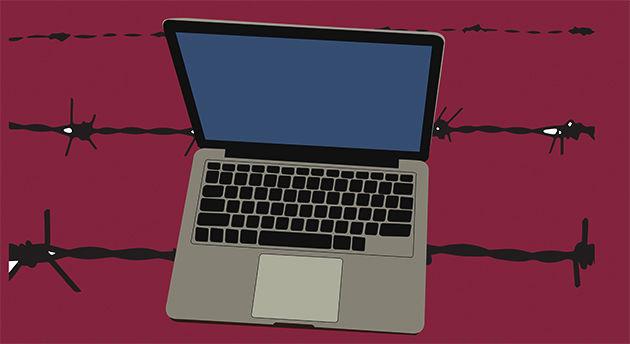Last week, dozens of cybersecurity experts gathered to discuss an increasingly difficult question: What do you do when someone is trying to break into your house — from 6,000 miles away?
The Cybersecurity of Critical Infrastructure Summit began Wednesday in College Station, the inaugural event in an annual series sponsored by the Bradley Foundation. The three-day conference primarily sought to address the ever-evolving threats to the physical pathways that allow the digital world to communicate.
Part of the summit focused on the primary difficulty in cybersecurity, being that a system is only as strong as its weakest link. When keeping a burglar out of a house, locked doors and closed windows work great until the thief discovers a key under the doormat.
Daniel Ragsdale, director of the Texas A&M Cybersecurity Center, said work in cybersecurity has become increasingly difficult as systems that were once safe become vulnerable.
“Now that we have interconnected all of our systems, someone in some remote land can access, say, your thermostat,” Ragsdale said. “So what we’ve done in practice is we’ve substantially increased the attack surface, so now we have to worry about the prospect of prospectively hacking our thermostat or our smart refrigerator.”
The summit was filled with discussions addressing a wide variety of subjects. On Friday, Edmond Rogers, the founder of a company focusing on cyber and physical situational awareness, Kaedago, led a discussion. Topics ranged from whether students should learn hacking, to what obstacles exist in physically securing infrastructure, to legal gray areas that exist in the cybersecurity field.
“I’m not here to attend another conference,” Rogers said. “I want to know collectively what we are going to do at Texas A&M to keep the lights running.”
Ragsdale said he was excited by the ability for the wide variety of government, academic and industry experts to gather to address growing issues.
“Collaboration is hard,” Ragsdale said. “You get comfortable working with people who are like ourselves and think like ourselves and that is easy, but it doesn’t get us to true innovation. And we had people in rooms where there was some spirited dialogue, but I think everyone was able to take a step back and better appreciate the problem but also better appreciate how others, in collaboration, could work together.”
Ryan Vrecenar, a computer engineering graduate student, said he is leaving the conference with a lot of optimism for the future.
“When you actually look into some of this stuff there is this daunting feeling that there is no help, there is so much infrastructure in place that makes this a hopeless problem that there is no way to begin solving it,” Vrecenar said. “And I thought the summit did a great job of introducing some of the ways that we are finally getting on the path to fixing and winning the war.”
Colton Riedel, a computer engineering graduate student, said working on individual projects it is easy to miss the bigger picture, and the seminar highlighted the whole group.
“I don’t always see directly how what I’m doing affects the system as a whole,” Riedel said. “So you come to the talks and meet the people from industry who work on different aspects and see how this directly relates to what they are doing.”
Ragsdale said he believes the results of the seminar go beyond a knowledge transfer, but to the creation of a network.
“What they don’t realize, is we’ve created a cohort of people who are in industry, government and academia that are focused on developing solutions in this space,” Ragsdale said. “And they don’t know it yet, but they are now a community. A cohort of folks, and we are going to stay in contact.”
Summit tackles cybersecurity challenges
January 16, 2017
Photo by Graphic by Rachel Grant
Daniel Ragsdale, director of the Texas A&M Cybersecurity Center, said work in cybersecurity is difficult as new technologies develop and become more vulnerable.
0
Donate to The Battalion
$2065
$5000
Contributed
Our Goal
Your donation will support the student journalists of Texas A&M University - College Station. Your contribution will allow us to purchase equipment and cover our annual website hosting costs, in addition to paying freelance staffers for their work, travel costs for coverage and more!
More to Discover










